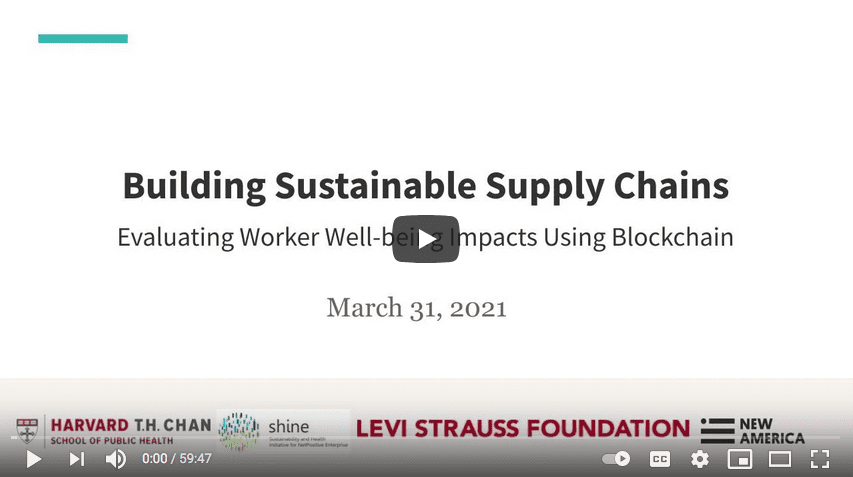
Evaluating Worker Well-being Impacts Using the Blockchain
Workers around the world lack mechanisms to safely and confidentially advocate for change or voice concerns related to their work, safety, health and overall well-being. The time for organizations to pursue innovative solutions to support healthier supply chain workforces is now. Business leaders are moving toward new models that increase trust, transparency, and accountability, thereby improving worker well-being and building more sustainable supply chains.
Over the past two years, a coalition of business, NGO, tech, and academia worked together to develop a blockchain-based solution to assess health and working conditions in supply chains. By integrating the SHINE Well-being Survey, a research tool based on universal human needs for well-being, into a secure blockchain platform that can be deployed in-person or remotely, workers are empowered to safely share their workplace experiences.
The solution, Survey Assure, was implemented among factory workers in Mexico and Poland. This crucial first step in the transparent evaluation of working conditions is designed to improve well-being and foster trust between brands, factory leadership and workers. Leveraging this technology for the evaluation of the human condition is a significant innovation with broad potential for positive impact on worker well-being worldwide.
In this webinar we cover:
- How this innovative open source solution can be adapted and developed for meaningful impact on worker conditions worldwide.
- How to create a comprehensive workforce-wide view of factory conditions and the health and well-being of workers, while protecting the identity of survey respondents and recording immutable data.
- Why having immutable responses from workers and regularly following up with them can improve trust, inform process improvement, reduce absenteeism and turnover, fortifying the effectiveness of solutions.
Read more here.
